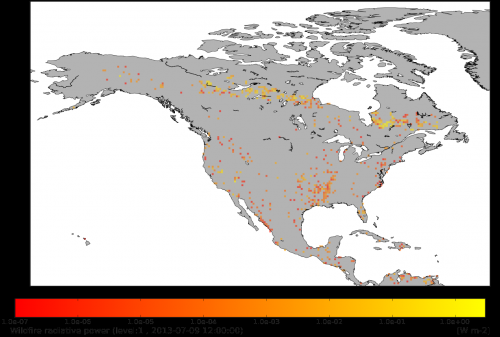Smoke from Canada Observed in Europe

This summer, Canada is experiencing unusually extensive wildfires. This week alone, 341 new forest fires have consumed a total area of 616,000 hectares. The smoke clouds produced by the fires in Canada have now reached Europe. In the EU research project Monitoring Atmospheric Composition and Climate (MACC-II), in which researchers from Forschungszentrum Jülich are playing a leading role, an integrated system for data analysis and modelling is used to provide daily forecasts of the global atmospheric concentration of pollutants. Smoke and trace gas emissions can be determined based on satellite data of the Canadian wildfires. The MACC-II model system then calculates how these pollutants are transported and chemically transformed.
An animation produced from data of the global MACC-II forecasting system shows how strong winds over the North Atlantic transport the smoke from Canada to the northwest of Europe within three days. The smoke is usually located at an altitude of two to four kilometres. During a couple of days this smoke was visible with the naked eye from several locations in Scandinavia. The atmospheric conditions over Europe, which were responsible for the beautiful summer weather in the past few days, transport the smoke and other trace substances in a southerly direction towards Italy.
The forecasts are verified through atmospheric measurements from commercial airliners as part of the European research infrastructure In-Service Aircraft for a Global Observing System (IAGOS) coordinated by Forschungszentrum Jülich. During their landing approach to Frankfurt and Paris on 6 July, aircraft flying for IAGOS measured significantly increased concentrations of carbon monoxide at altitudes between two and four kilometres. These values match the forecasts from the MACC system. This episode therefore convincingly demonstrates how measurements and model calculations complement each other in near real time and help us to understand processes in the atmosphere.
The MACC-II project is coordinated by the European Centre for Medium-Range Weather Forecasts (ECMWF) in Reading, UK. It includes 31 partners from 13 EU countries.
Provided by Forschungszentrum Juelich



















